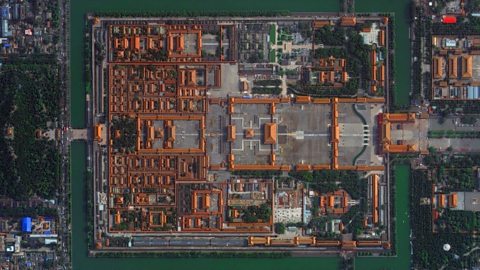Hidden under the streets of red buses and black cabs, London is home to one of the worldās oldest transport systems. The London Underground, otherwise known by its nickname the Tube, is a staple of city life and handles up to five million passenger journeys a day.
But how exactly did it come to be? “óĻó“«Ć½ Bitesize delves into the history of the worldās oldest underground railway.
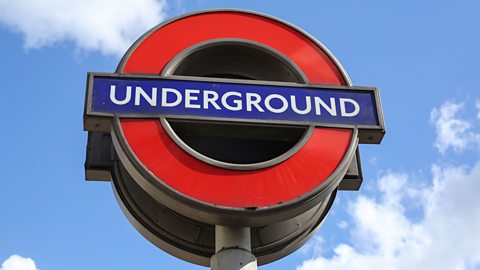
1. Why was the London Underground invented?
The idea of an underground transport system was first proposed in 1843 by a City solicitor called Charles Pearson. The concept was part of a city improvement plan and formed an effort to reduce street traffic at a time where congestion in London had reached crisis point.
While his idea was initially rejected by Parliament, Pearsonās proposal aligned with an approved project from a separate group of entrepreneurs. As a result, the two parties came together and established the Metropolitan Railway Company in 1854.
2. When was the London Underground built?
Construction on the London Underground began in 1860 and the line was built just below street level using cut-and-cover technique. For the most part this required digging a trench approximately 10m (32 ft) wide and six metres (19ft) deep. Brick was then used to form walls and an arch around the cutting. Finally, two meters of top soil was laid upon the brick arch and the road above was built.
The route ran beneath existing main roads and as a result it was expensive and caused huge disruption in the streets. But after nearly two years of construction, the worldās first underground railway was open for business in January 1863. The first Tube line was the Metropolitan Railway which operated 3.75 miles (6km) and served seven stations between Farringdon and Paddington. It was an immediate commercial success.

3. What order were the Tube lines built in?
Much of the central London network was developed privately within the first 50 years of the Metropolitan lineās construction. The first stretch of the Metropolitan District Railway, from South Kensington to Westminster - now part of the District and Circle lines - opened in 1868 and the Circle line was completed in 1884.
It wasnāt until December 1890 that The City and South London Railway opened the worldās first deep-level electric railway. By the end of 1905, the Circle and District Lines switched from steam power to electric. However, it wasnāt until 1961 that the last steam locomotive passenger trains were replaced.
The latter half of the 20th Century saw the official opening of the Victoria line (1969) and the Jubilee line (1979).
On May 2022, the Elizabeth line was introduced to the network to celebrate the Platinum Jubilee year of Queen Elizabeth II. But despite travelling underground for the central part of the journey, it isnāt considered a new Tube line as it uses different rail infrastructure and much bigger trains.
Today there are 11 Tube lines, serving 272 station and covering 249 miles (402km).
Test your knowledge of the London Underground
Can you take bikes on the London Underground?
The answer may vary depending on what bike you have. At the time of writing, in April 2024, folded bicycles are allowed on the Tube at all times. However, non-folding bikes can only be taken on some sections of the Underground outside peak times depending on the line. Electric scooters are not allowed, regardless of whether theyāre folded or not.
What is the longest single tube journey?
The longest continuous journey you can take on the whole tube network is on the Central line. With a distance of 54.9km (34 miles), the trip will take you from Epping to West Ruislip and will take around one hour and 25 minutes.
The shortest single tube journey is on the Piccadilly line. At just 250m (0.1 miles) apart, the Convent Garden and Leicester Square stations are very close neighbours.
What is the busiest tube station?
In 2023, Transport for London released data showing which stations had the most passengers enter and exit in the month of August. It revealed that Kingās Cross station was the busiest Tube station, with around 6,383,000 passengers.
The result may not come as a huge surprise, as the station serves the Circle, Victoria, Northern, Piccadilly, Hammersmith, Metropolitan and City lines.
It was followed by Tottenham Court Road which saw 4,843,000 and Waterloo in at third with 4,837,000 passengers.
How fast does the London Underground go?
Between 15mph (24km/h) and up to 60mph (96km/h).
Train speeds on the London Underground differ across the network and can be affected by a range of factors including track infrastructure, distance between stations and service frequency.
The Metropolitan and Northern lines have the biggest variations in speeds. Once these lines reach suburban areas, there is a greater distance between stations meaning they can travel around 60mph (96km/h). However, lines in central London often run at a slower speed.
The Metropolitan line has the greatest average speed at 27.4mph (44.14km/h).
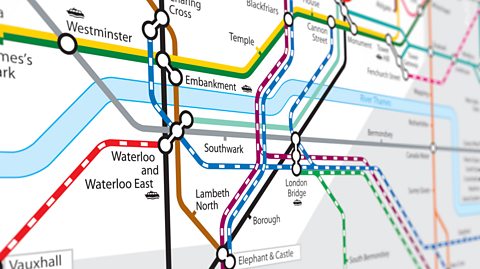
4. Who designed the London Underground map?
The London Underground map was created in 1933 by technical draughtsman Harry Beck. The design was initially rejected by the Transport for London for being too radical, but is now an instantly recognisable symbol of the capital.
The map is noted for its simplicity and colourful criss-crossing lines, opposed to other maps of the time which emphasised distance and geographical accuracy.
In February 2024, Transport for London announced that the London map would undergo a significant change with the introduction of six new Overground lines.
Each new service will be marked by a different colour. They will be the Lioness line, the Mildmay line, the Windrush line, the Weaver line, the Suffragette line and the Liberty line.
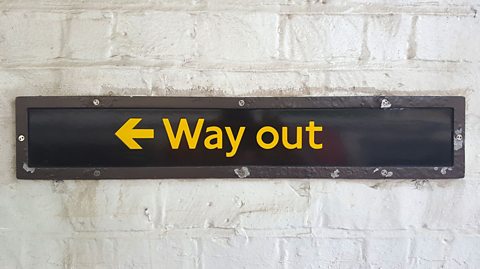
5. What is the difference between the London Underground and Overground? And what is DLR?
As the name suggests, the London Underground mostly travels underground. It is operated entirely by Transport for London.
The London Overground is a rail network that serves Londonās boroughs, as well as Watford in Hertfordshire. It runs above ground and while it is under the concession control and branding of Transport for London, it is franchised and forms part of the UKās National Rail network.
On 20 November 2024, Transport for London began the roll out of its six new Overground names and colours. This includes the Lioness, Suffragette and Windrush lines.
The Docklands Light Railway, known as DLR, is a railway which first opened in 1987. It is unique among London transport links because it is a driverless train. It has operated under franchise by the private sector since 1997.
This article was published in April 2024 and updated in November 2024
Five of the most remarkable railway stations in the world
Climb aboard as we explore some of the world's most incredible train destinations
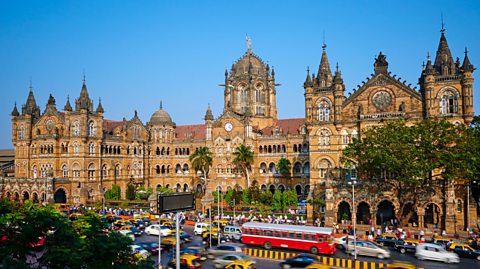
Four amazing means of transport from around the world
From Wales to the Arctic, “óĻó“«Ć½ Bitesize looks at four brilliant forms of transport from around the world.
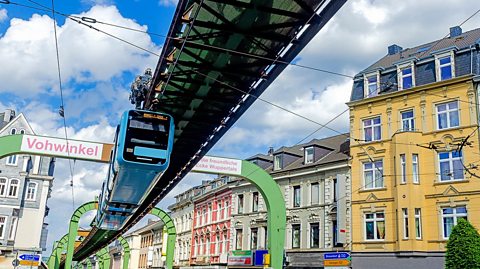
Can you guess the landmark from the aerial photo?
Take a look at these aerial photos and see if you can figure which famous landmarks they are, from right across the world.
